Mount Koya - The Sacred Land Of Japanese Buddhism

Mount Koya, located in Wakayama Prefecture, is the sacred land of Japanese Buddhism. This site is the head temple of Shingon Buddhism, and has a history dating back 1200 years.
Mount Koya - The Heart of Japanese Shingon Buddhism
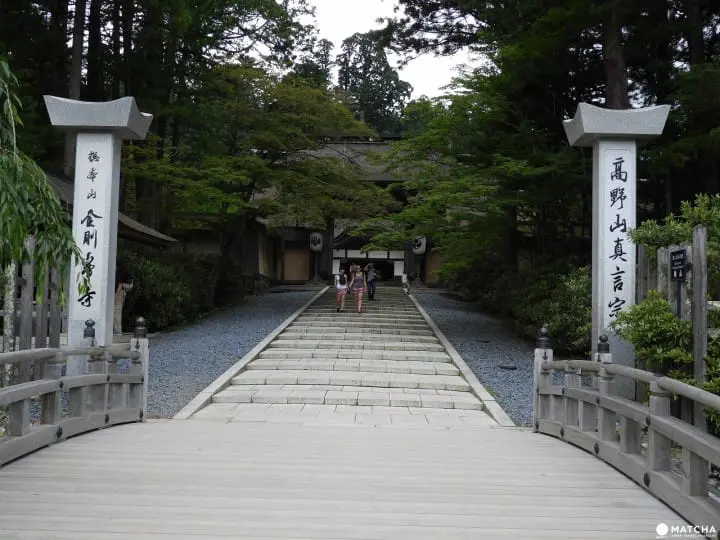
Mount Koya, located in Wakayama prefecture, is the sacred land of Japanese Buddhism, and the center (sohonzan, *1) of Shingon Buddhism. The official title of this site is "Sohonzan Kongobuji". The title refers to Mount Koya as a whole, which consists of 117 tatchu (*2) temples.

Shingon Buddhism is a sect that endeavors to reveal the truth which lies beyond the language that we speak. Kobo Daishi, who studied Buddhism in China, founded a temple in Mount Koya to teach his philosophy. He is considered to be still going through a Buddhism training called nyujo (*3).
*1 Sohonzan: center of operations.
*2 Tatchu: a smaller temple attached to the main temple.
*3 Nyujo: one of the extreme training practices in Shingon Buddhism. Mummification caused by extreme fasting, this state is considered to be eternal life, rather than death.
Recommended Spots at Mount Koya
Okunoin Temple
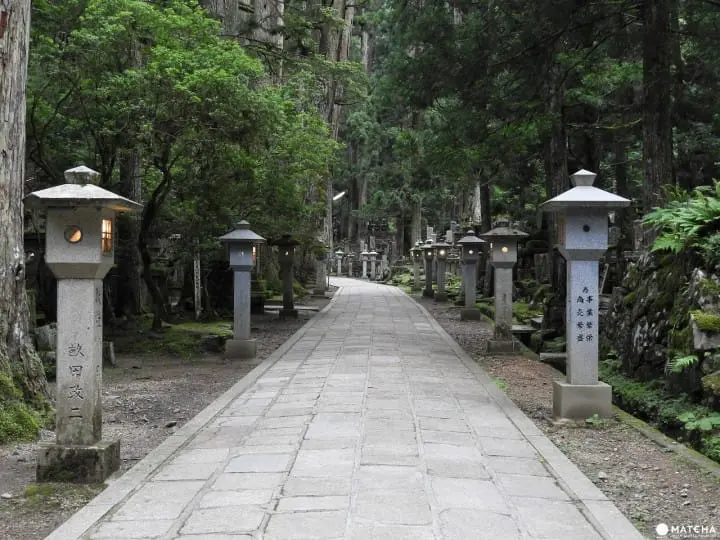
This is the sanctuary of Mount Koya, where Kobo Daishi has entered the state of nyujo. The approach runs through a forest filled with two- to three-hundred year old Japanese cedar trees, and some of the trees are said to be over a thousand year old. A great number of graves stand along both sides of the approach.
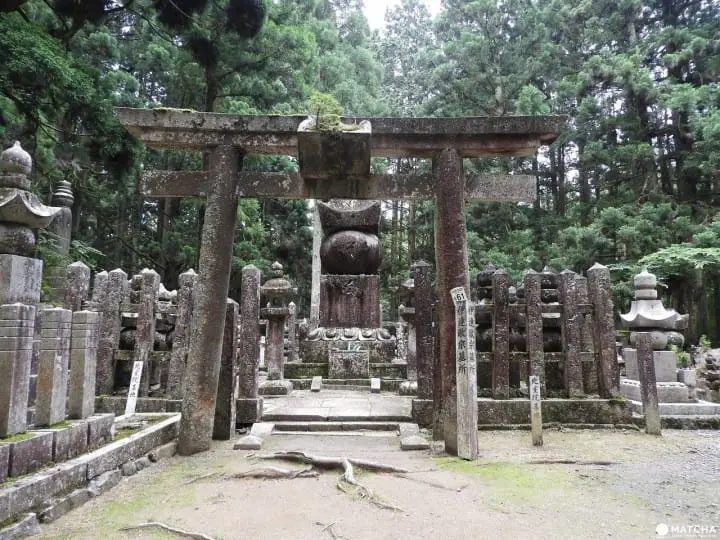
The photograph shows the grave of a famous warlord. There are also graves and cenotaphs of various daimyo in this area. Torodo (Lantern Hall), which houses the toro (*4), is located at the end of the approach, and Kobo Daishi Gobyo (mausoleum), where the body of Kobo Daishi rests, stands behind Torodo.
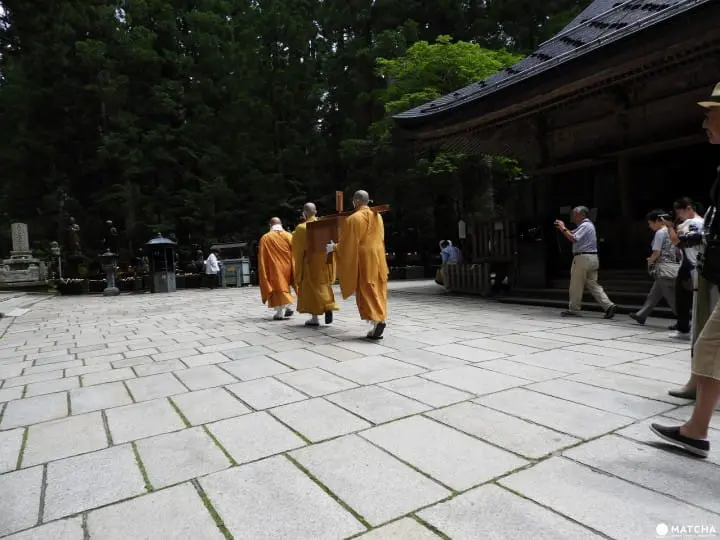
At Okunoin, a ritual of delivering meals to Kobo Daishi called shojingu, is held twice every day. If you're lucky, you might be able to see it.
Okunoin Torodo
Open: 6:00 - 17:30
On January 1st, the Torodo is open from midnight to 2:00. On August 13th, the Torodo re-opens from 19:00 to 21:00.
*4 Toro: a Japanese lantern, mainly used in the outdoors.
Danjo Garan
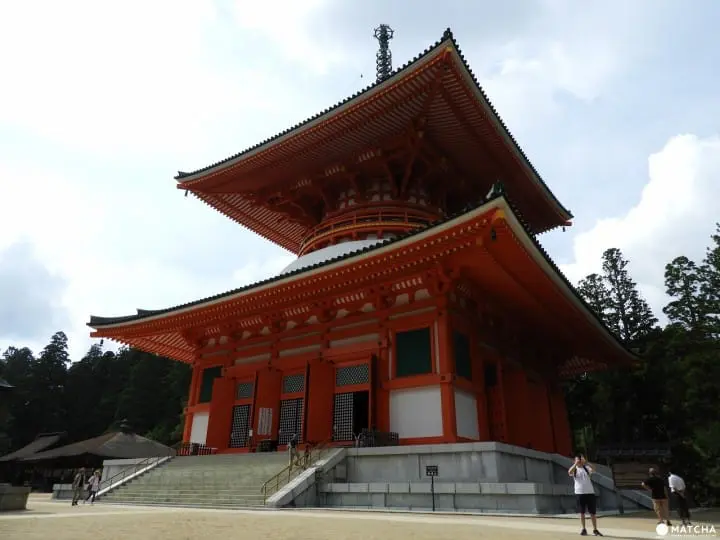
This monastic complex was the first site built when Kobo Daishi founded the main temple on Mount Koya. After passing through the Chumon gate, the symbolic, vermilion-colored Konpon Daito jumps into view. The admission fee here is 200 yen, including tax.
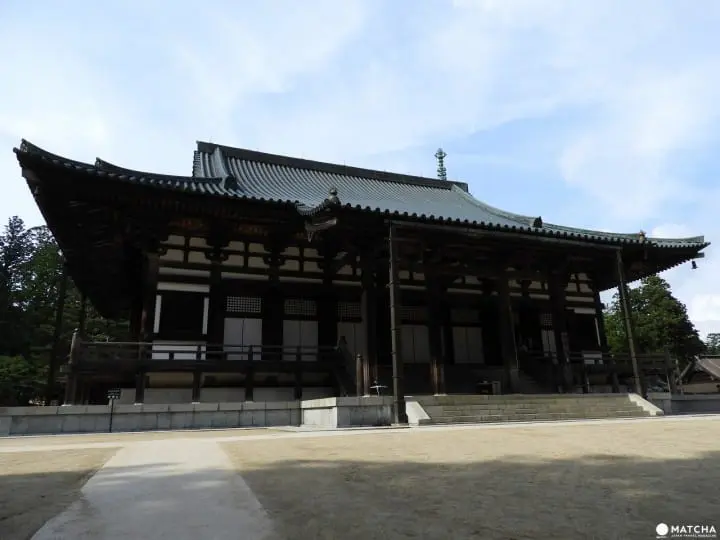
Kondo, the main temple of Mount Koya, stands in the foreground of Konpon Daito. The admission fee is also 200 yen, including tax.
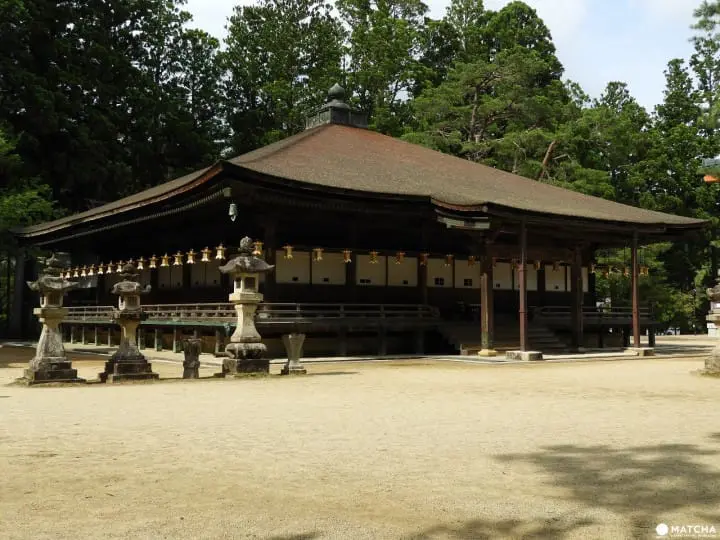
This is the Miedo (Great Portrait Hall), where portraits of Kobo Daishi and his Judai Deshi (*5) are lined up.
*5 Judai Deshi: the ten main disciples of Kobo Daishi.
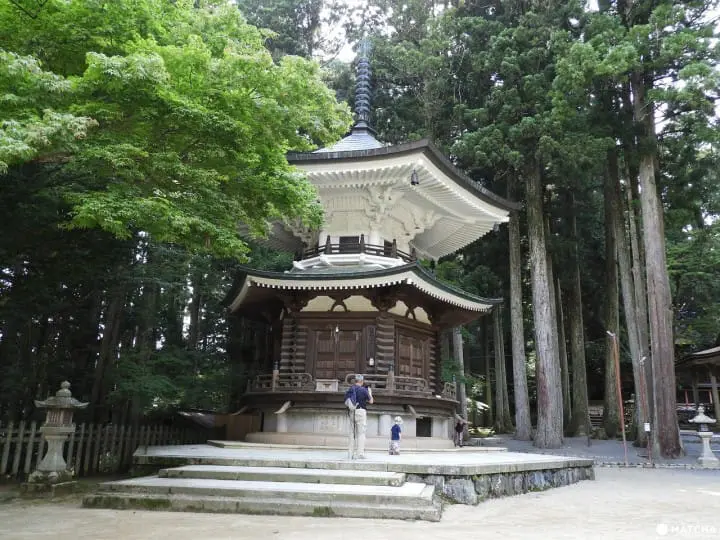
Of all the architectures of Danjo Garan, a very special one is the Rokkaku Kyozo. There are handles which can be rotated sticking out from its base. It is said that if you can rotate a handle 360 degrees, the act will equal the kudoku (*6) of reading a scripture named "Issaikyo."
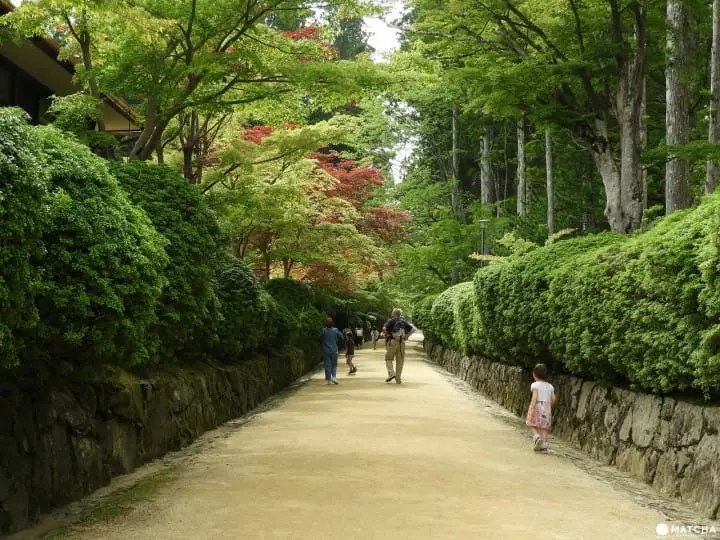
Be sure to walk the beautiful road named Jabara (snake's belly)-michi on your way back.
*6 Kudoku: a meritorious deed which will be rewarded by the deities.
Danjo Garan
Open: 8:30 - 17:00
Admission Fee: 200 yen (Please note that Konpon Daito and Kondo have separate fees)
Kongobuji
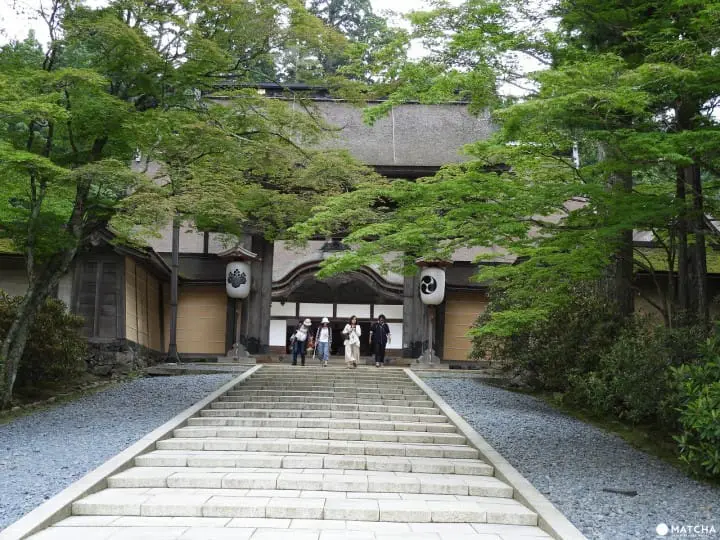
The Seimon gate is the oldest architecture on Mount Koya. The residing priests use the smaller entrance on the right side.
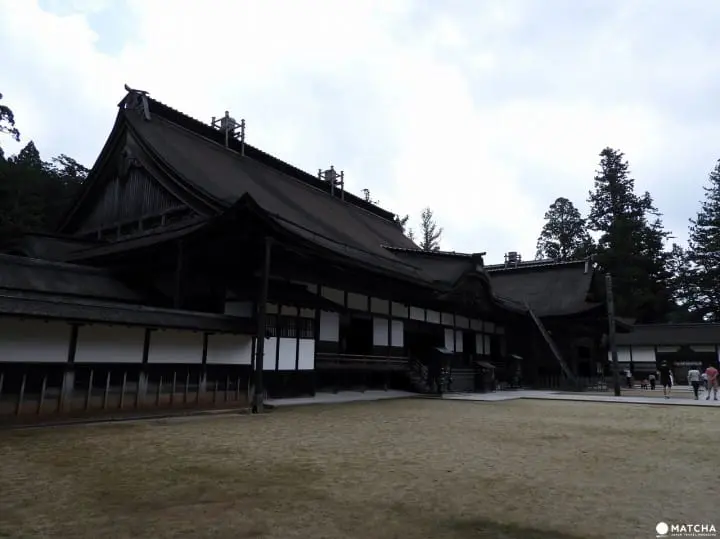
A Tensui Oke (*7) is set on the roof of Kongobuji, so that the collected rainwater can be used in case of fire.
The rooms inside are adorned with brilliant fusuma art. The temple also has a rock garden, and a kitchen to prepare meals for the priests.
*7 Tensui Oke: a traditional Japanese tank used for collecting and storing rainwater.
Kongobuji
Open: 8:30 - 17:00 (The entrance closes at 16:30)
Admission Fee: Adults 500 yen, Elementary School Children 200 yen. Admission free for preschoolers.
Mount Koya - Access
Mount Koya can be reached using the Nankai Electric Railway from Namba Station in Osaka. Information about Namba Station can be obtained from this article: Six Namba Stations!? How to Navigate Osaka's Namba Area.
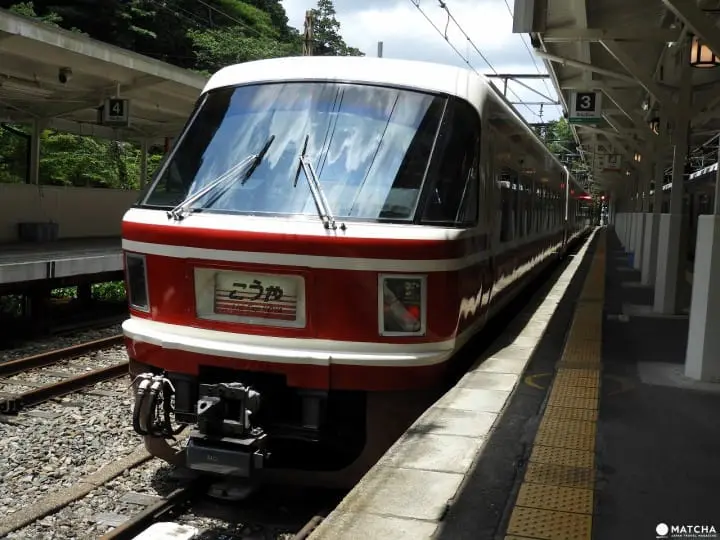
From Nankai Namba Station, take the Koya Limited Express to Gokurakubashi Station, and switch to the Nankai Koyasan Cable Car. The whole ride takes about an hour and forty minutes, and the fare is 2040 yen.
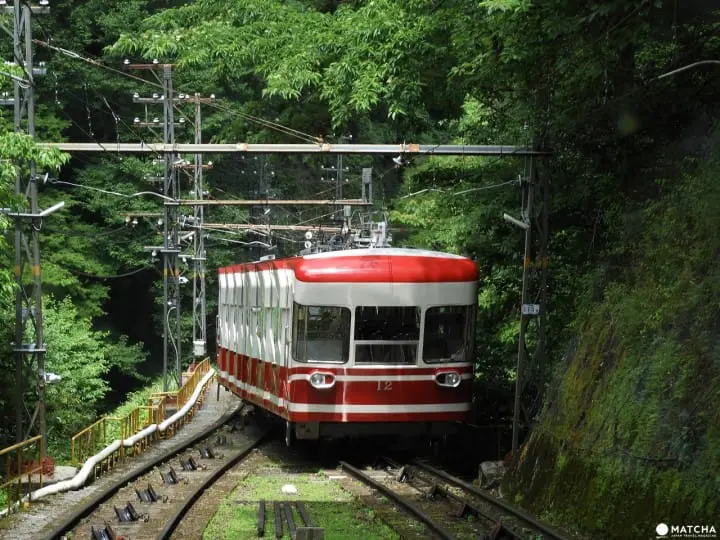
However, the number of Koya Express trains every day is limited, so it might be better to take an express train to Hashimoto Station from Nankai Namba Station and switch to a train bound for Gokurakubashi Station. This route takes about two hours, and the fare is 1260 yen.
From Koyasan Station, take the Nankai Rinkan Bus or a taxi to the temples.
The temple complex on Mount Koya is surrounded by nature, and filled with Japanese history and culture. It will assuredly be worth your time to make a visit to this sacred spot.
This article was made with assistance from Sohonzan Kongobuji.
奈良生まれの旅好きライター。日本の魅力を世界の人々に伝えていきたいです。










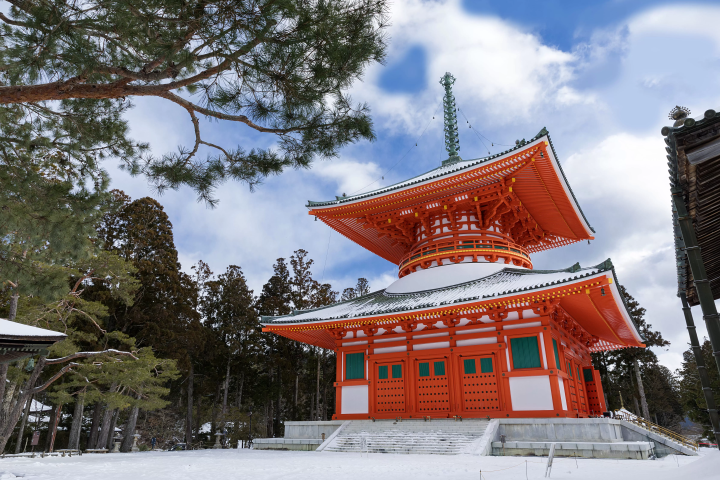


































![[2026] Top 5 Strawberry Picking Spots in Tokushima, Naruto| Farms and Access Guide for January to May](https://resources.matcha-jp.com/resize/720x2000/2025/03/06-227165.webp)

